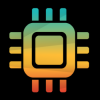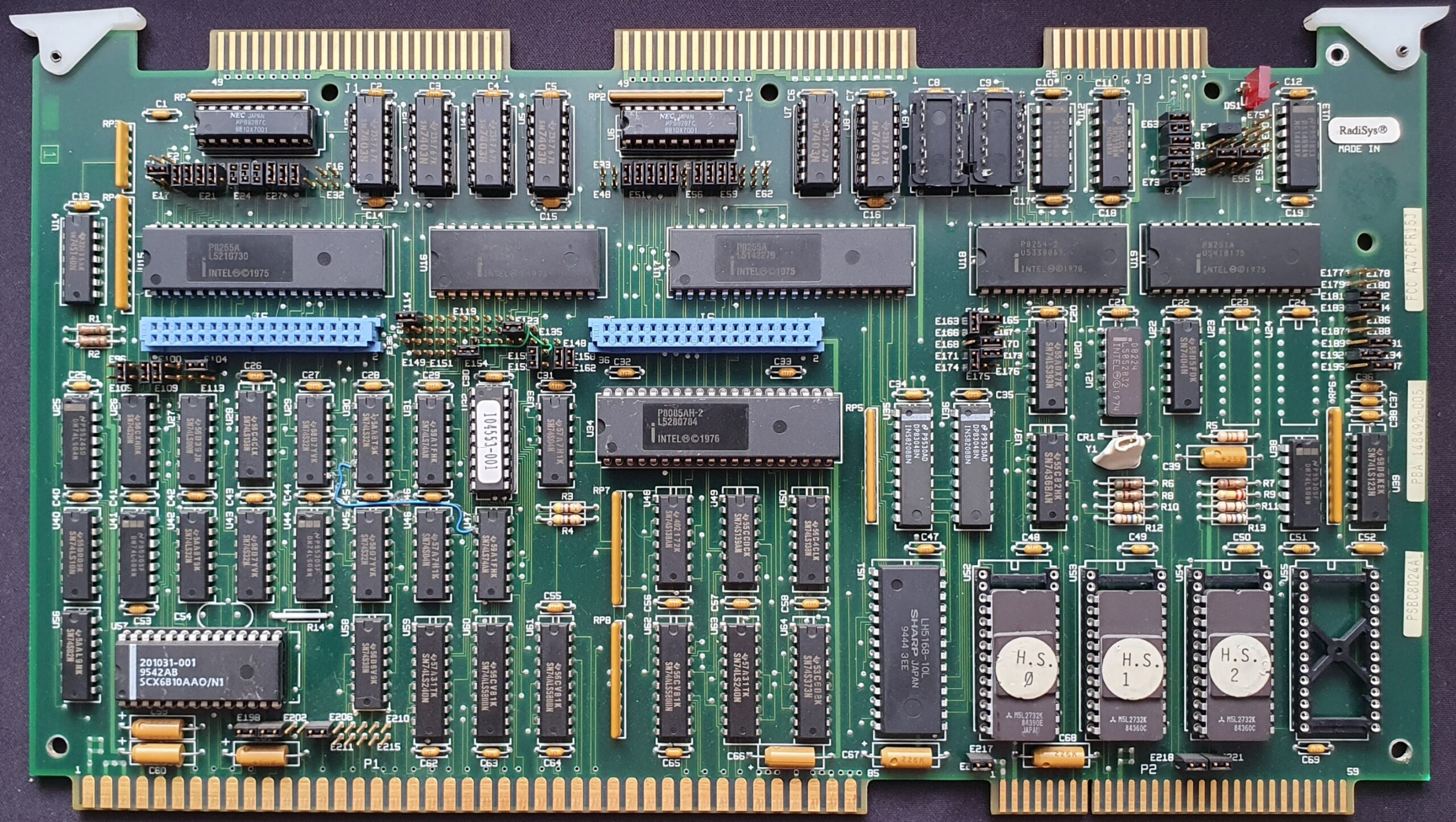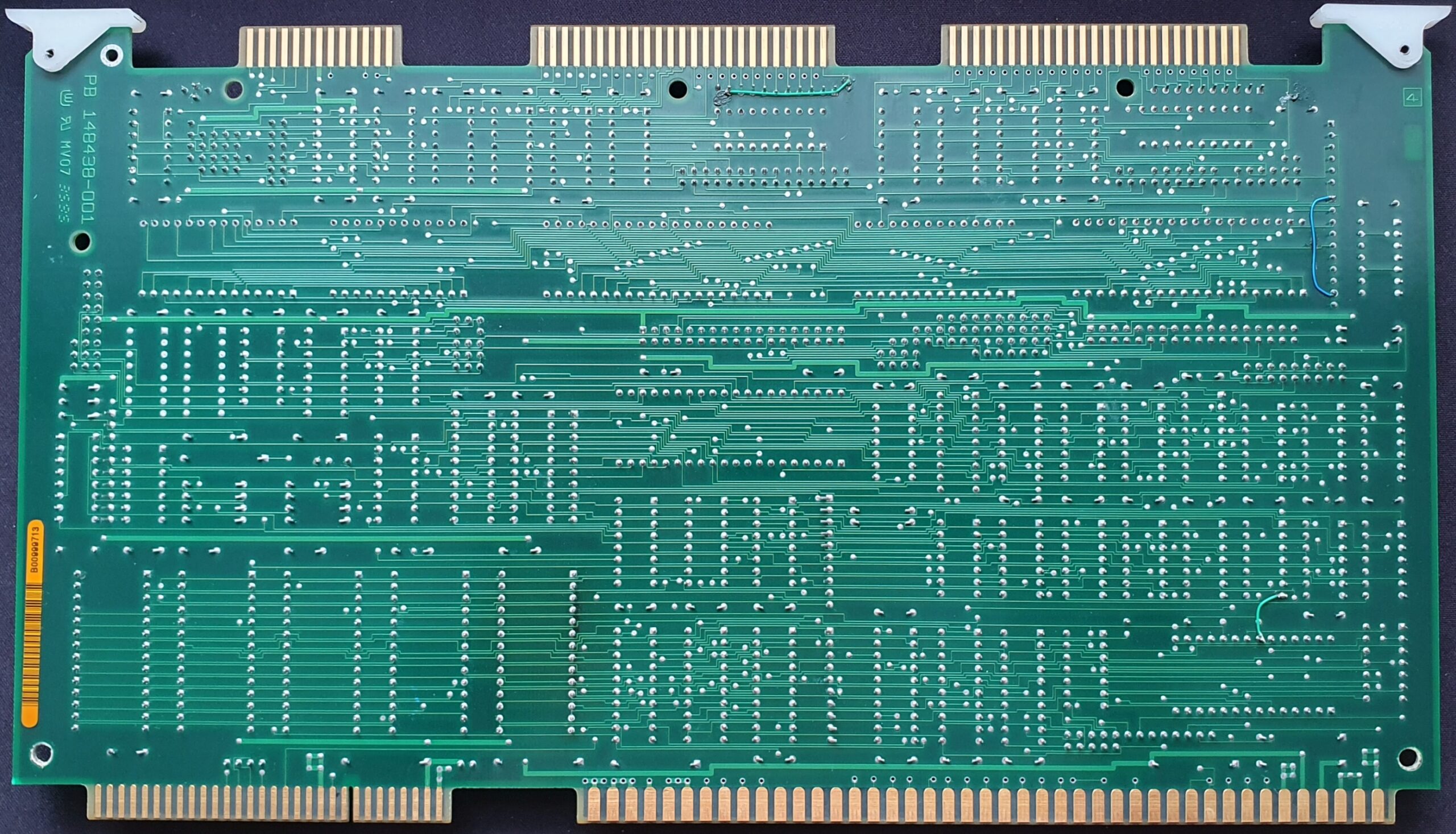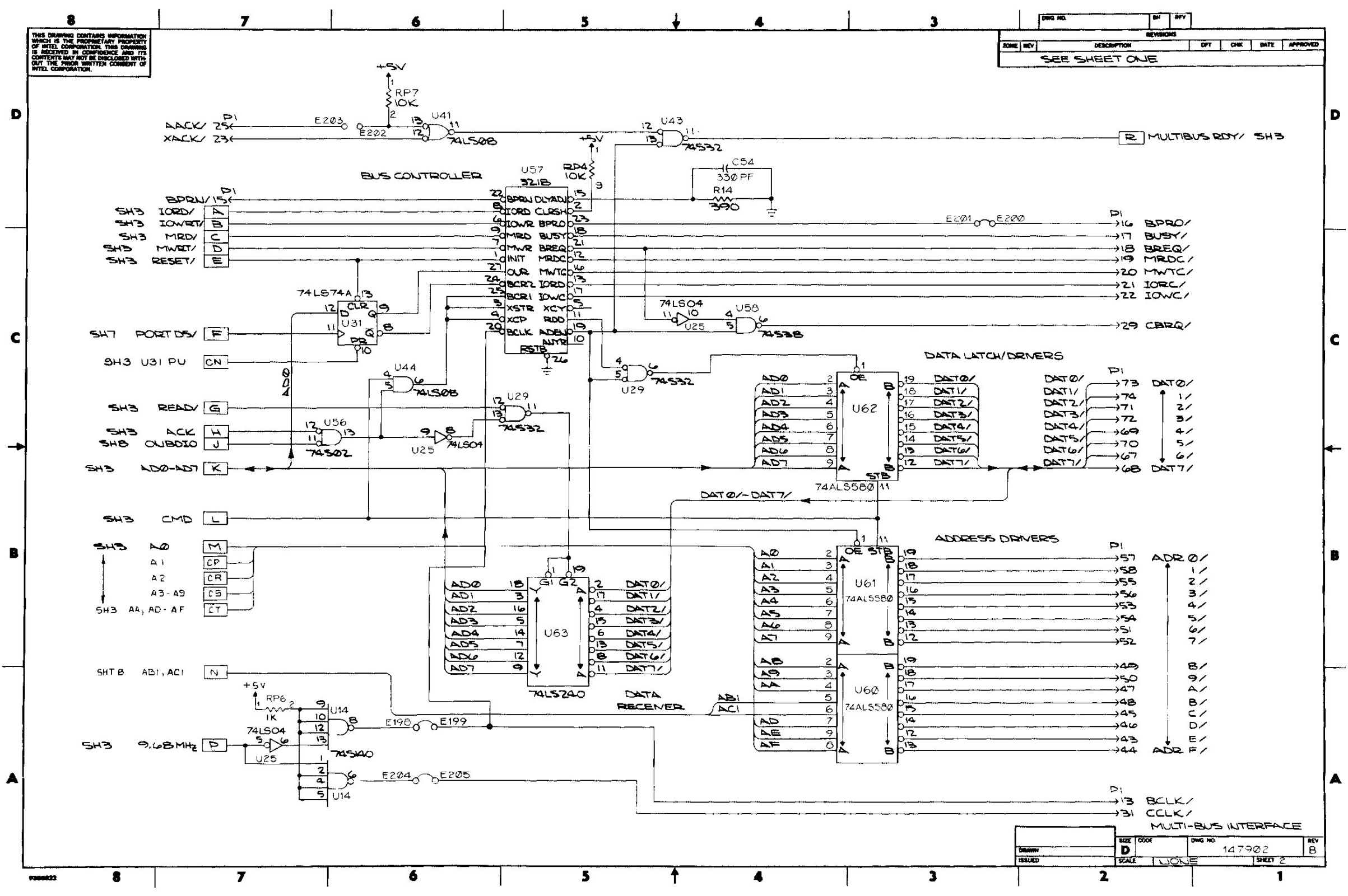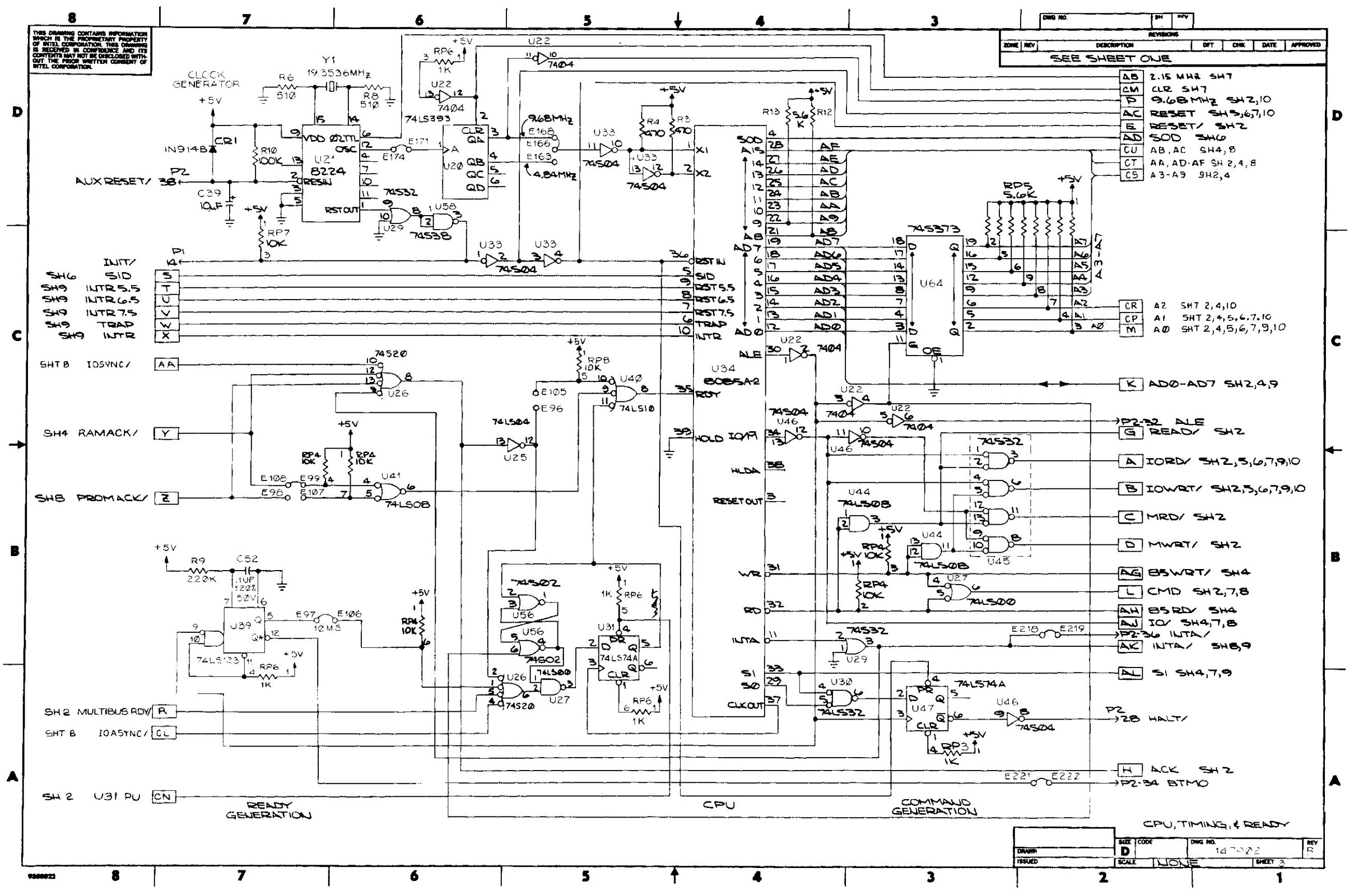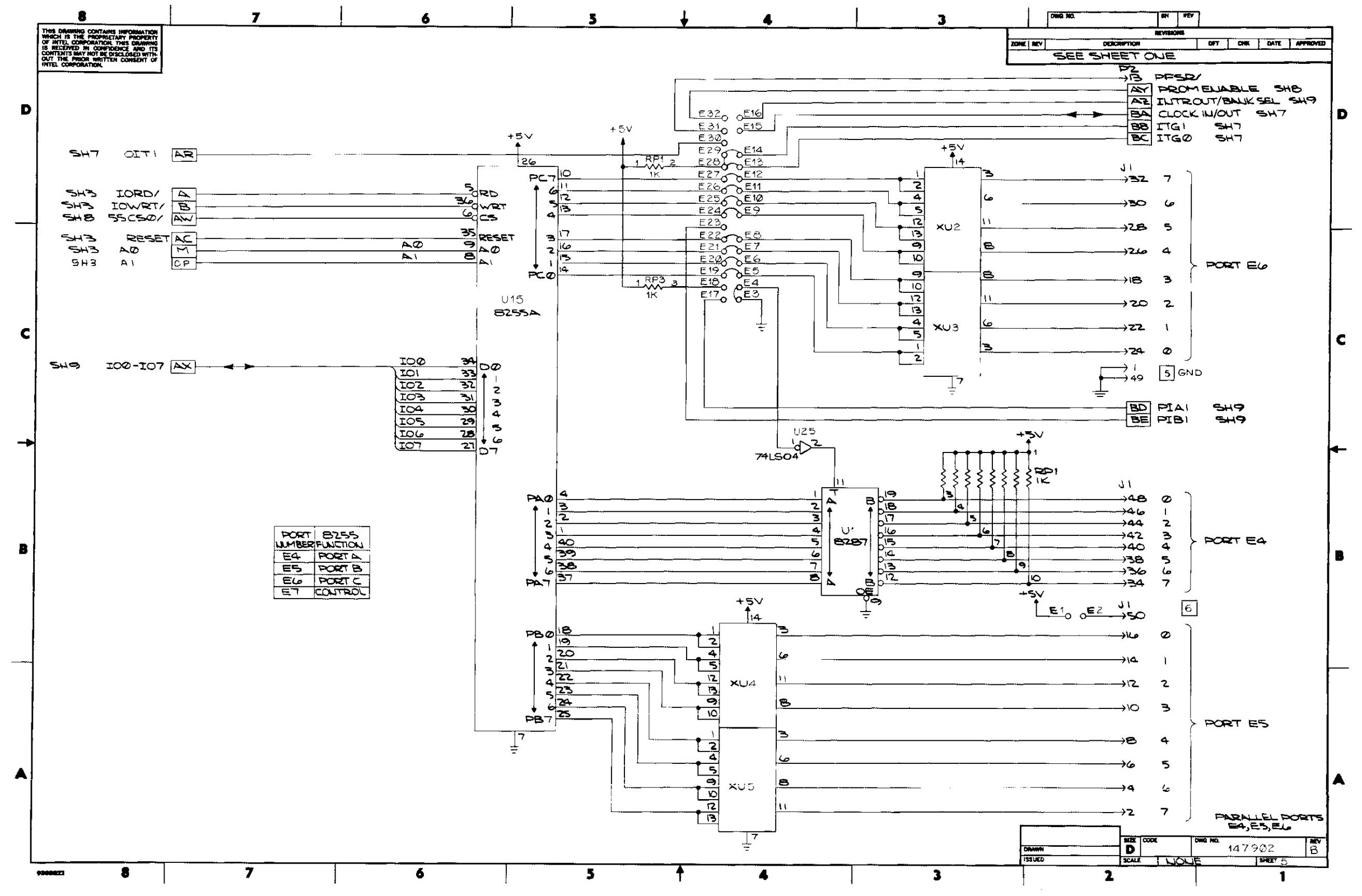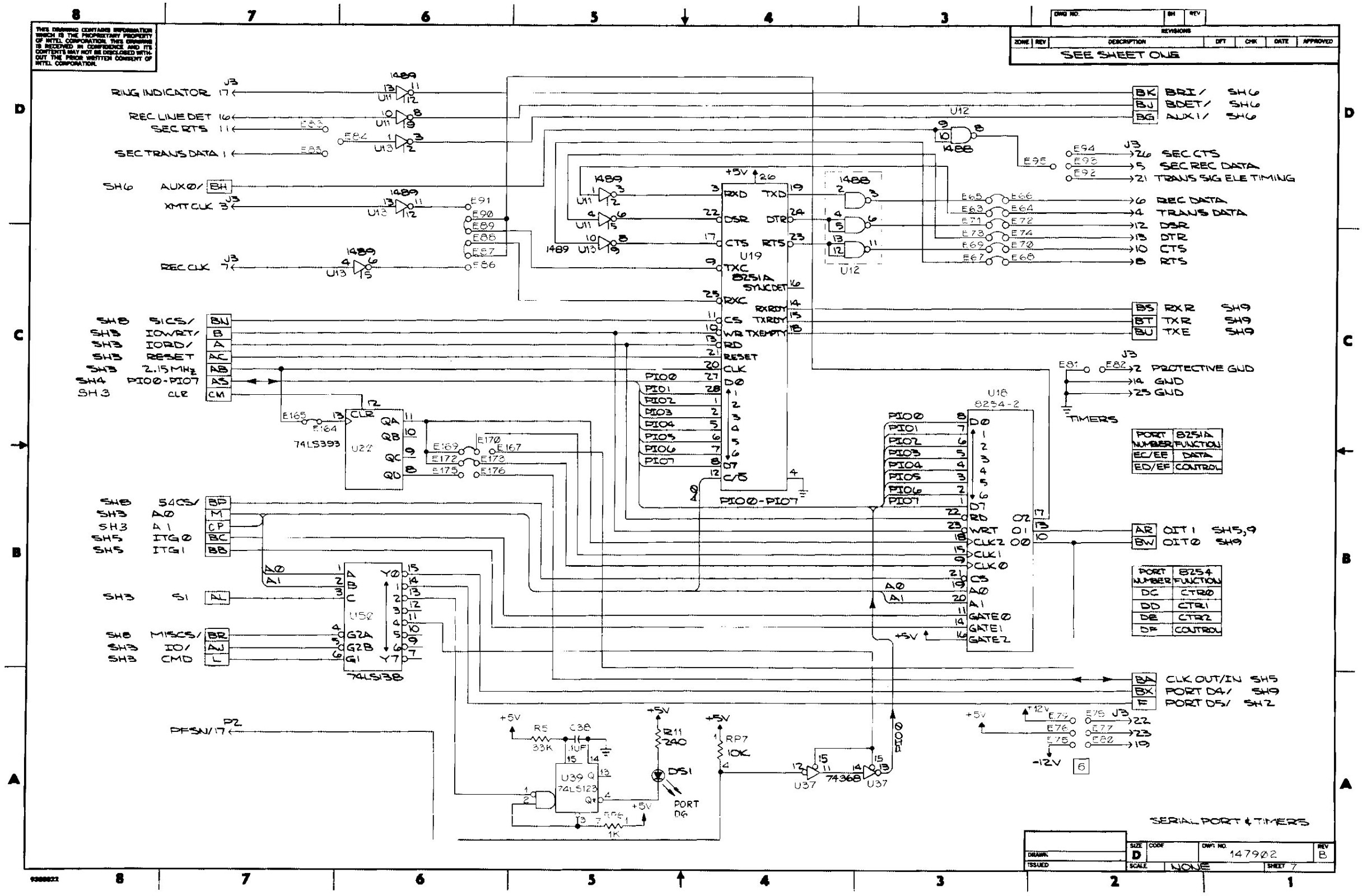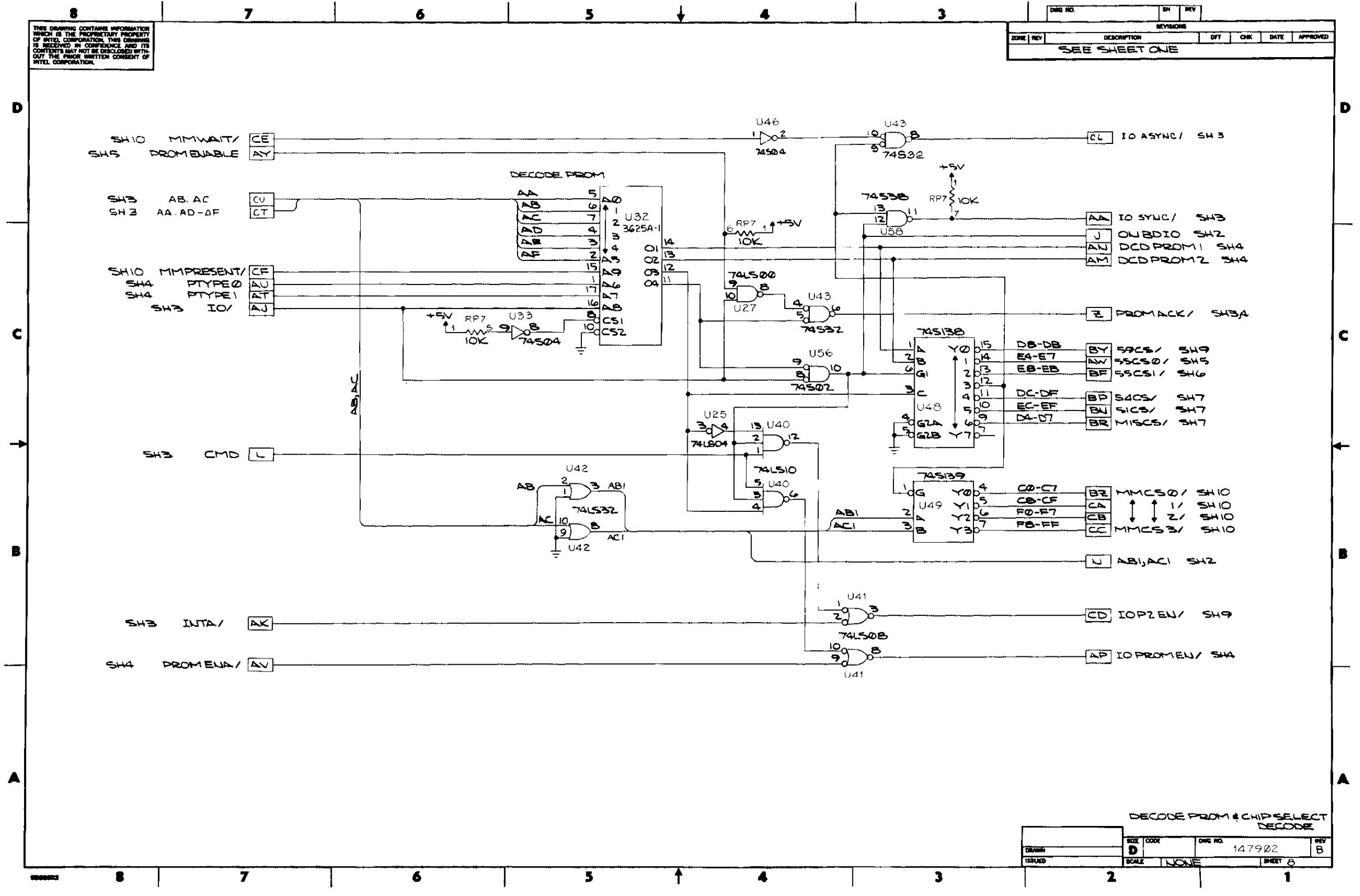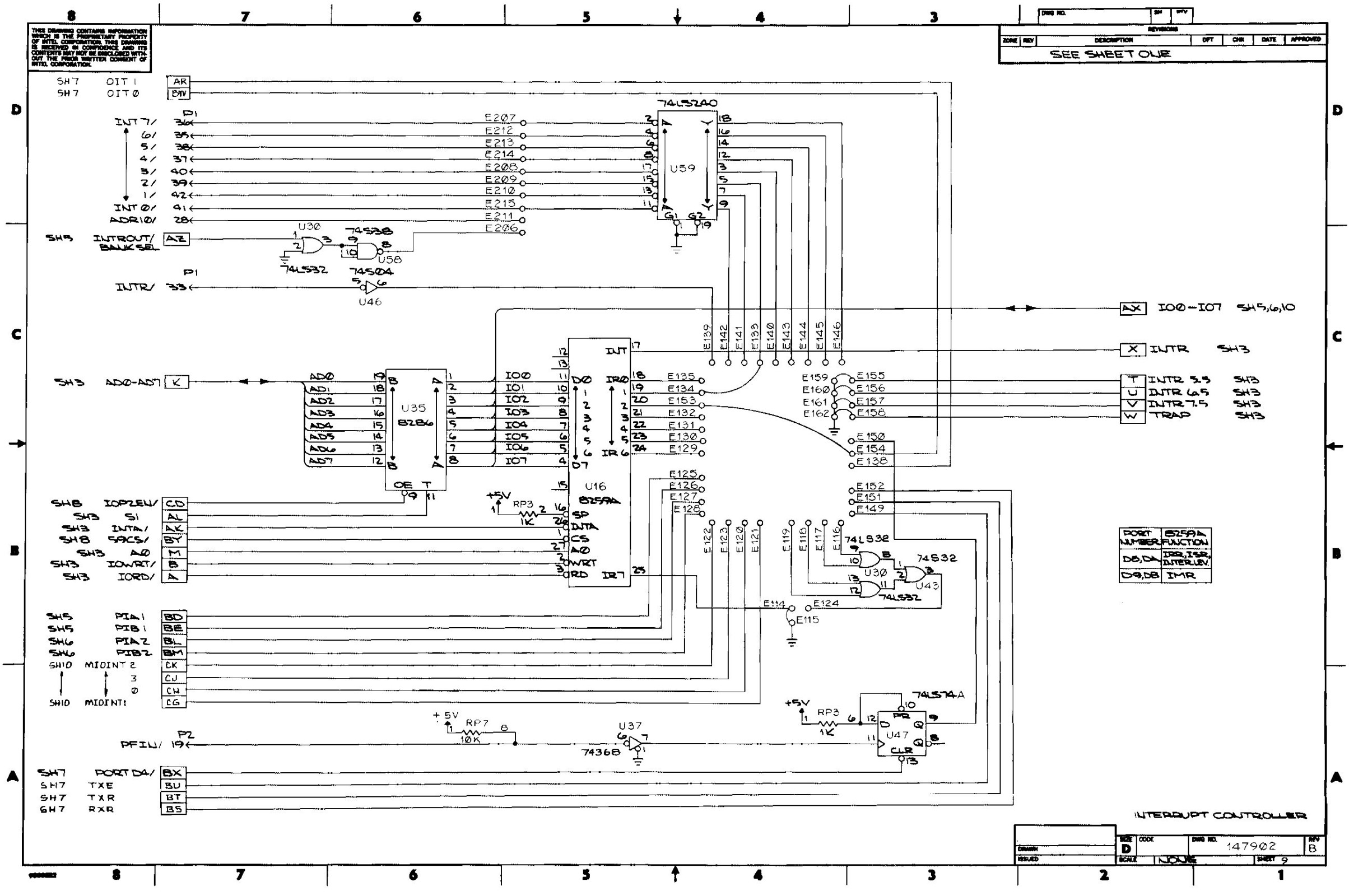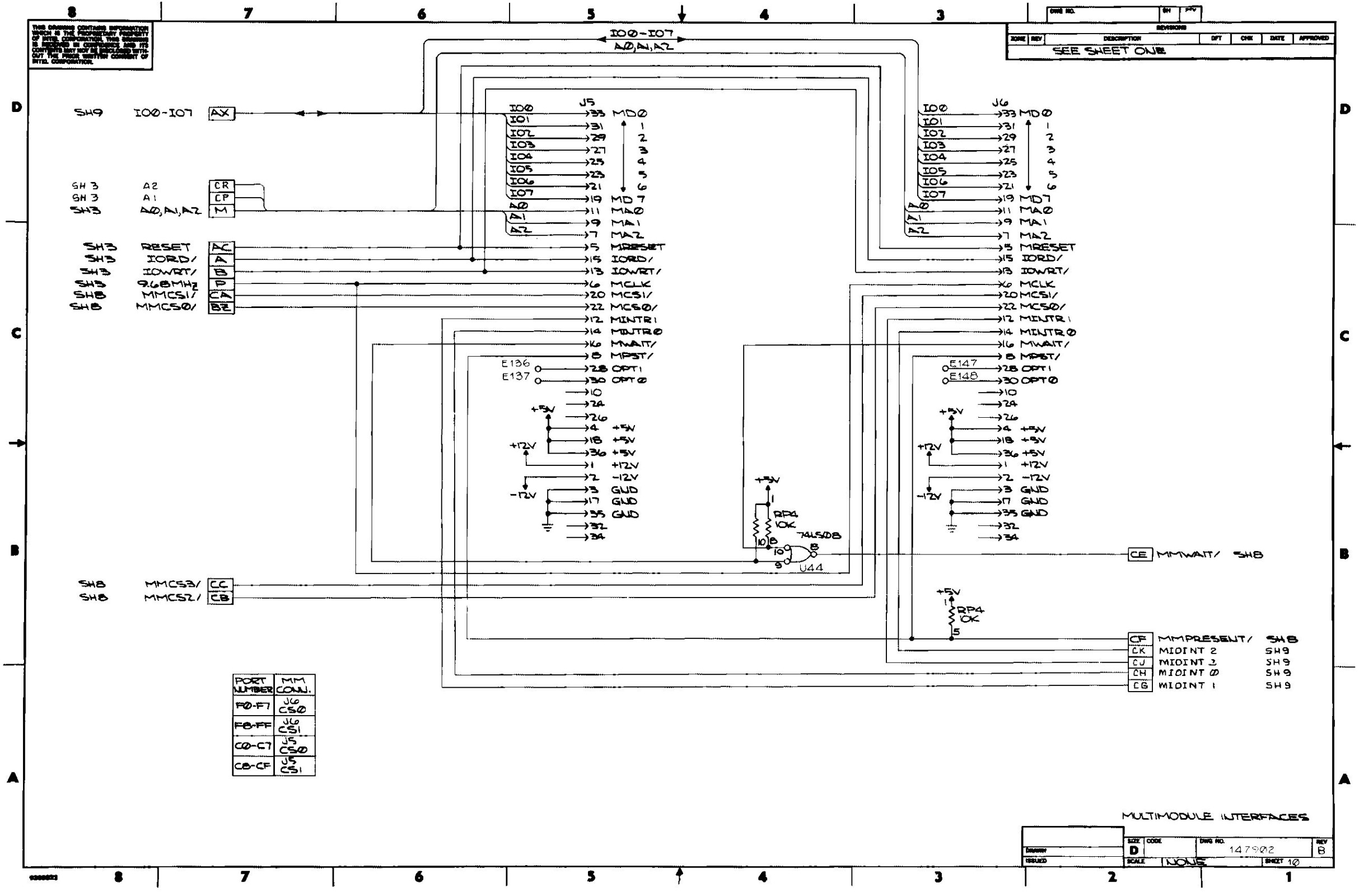The iSBC 80/24A board is controlled by an Intel 8085A-2 microprocessor operating at 4.84 MHz. System access is provided by the Multibus connector and an auxiliary connector. Off-board peripheral I/O operations are handled through 48 parallel lines, a serial communications channel connector and two iSBX Multimodule connectors.
The iSBC 80/24A board can directly access up to 64K bytes of memory. A single SRAM device supplies 8K bytes of on-board RAM. Also, the board can accept up to 32K bytes of user-installed ROM, PROM, or EPROM devices (either 24- or 28-pin devices). The on-board 8254 Programmable Interval Timer (PIT) provides three independent counter outputs which may be configured to a variety of applications, including frequency output, rate generator, interval timer and real-time interrupts. One of these counters serves as the baud rate clock for the on-board 8251A Programmable Communications Interface (PPI) device. Serial I/O operation is handled by an Intel 8251A Programmable Communications Interface (PCI) device. The board is configured to the RS232C structure; however, it may be adapted to a TTY interface using optional equipment. Baud rates are software programmable via the on-board timer.
The iSBC 80/24A board utilizes two Intel 8255A Programmable Peripheral Interface (PPD devices to control the six, 8-bit parallel I/O ports. These ports may be configured to a variety of dedicated or general purpose applications. Two Intel 8287 Bus Transceiver devices are supplied for two of the ports and sockets for line driver or terminator devices are provided for the other four ports.
Up to eight interrupts are controlled by the 8259A Programmable Interrupt Controller (PIC), while four additional interrupts are handled directly by the 8085A-2 CPU. An interrupt jumper matrix allows the interrupt structure to be easily configured to your application.
Two iSBX bus connectors are provided on the iSBC 80/24A board. These connectors are designed to expand the board’s I/O functions, using special purpose add-on Multimodule boards, such as the iSBX 344 Intelligent BITBUS Interface Board. One or two iSBX Multimodule boards may be added, as required by your application.
The iSBC 80/24A board is designed to operate as a full master in any Intel Multibus compatible chassis.
